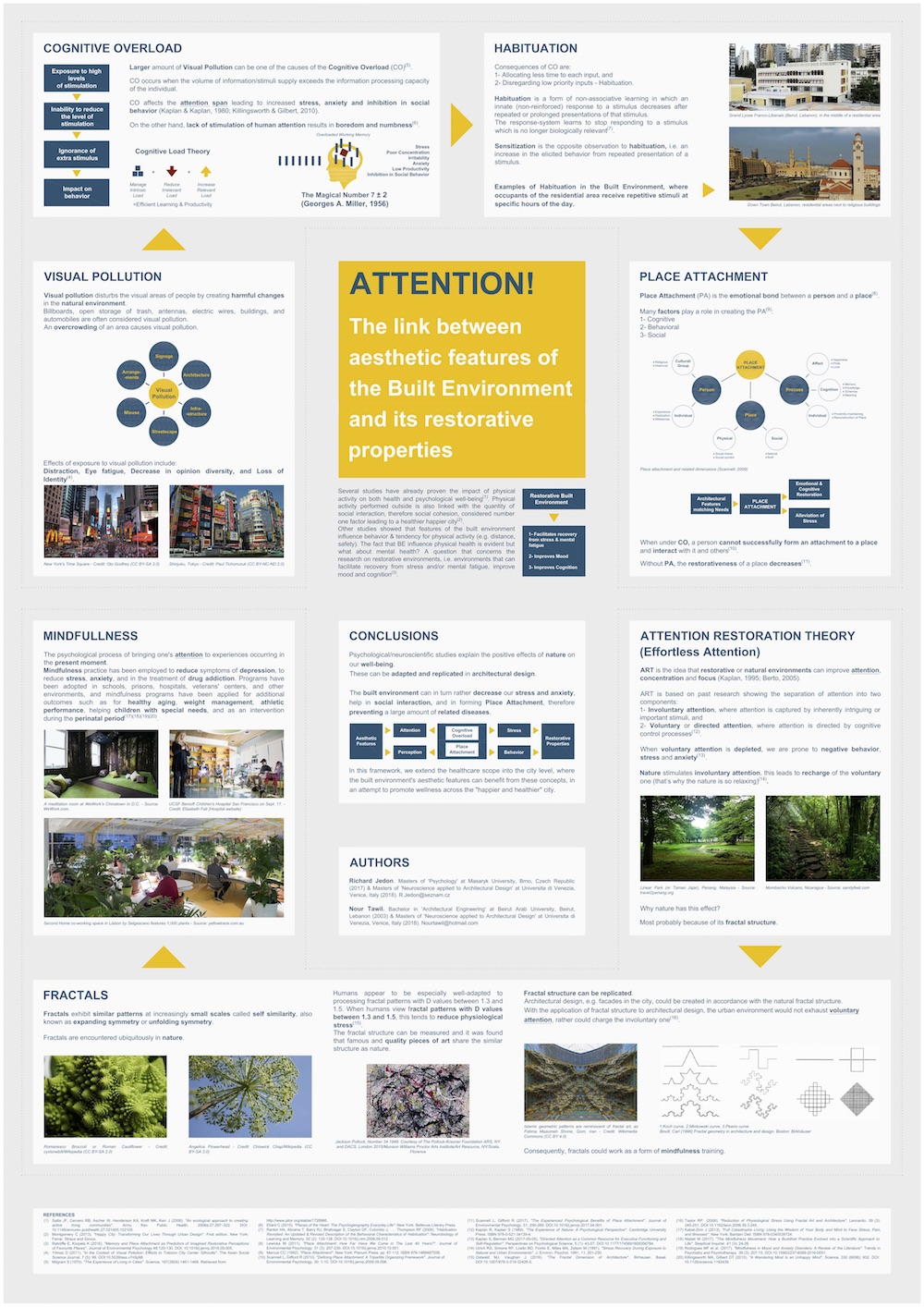Mental/behavioural healthcare / Public health
European Healthcare Design 2019
Attention – the link between aesthetic features of the built environment and its restorative properties
By Richard Jedon and Nour Tawil | 12 Jun 2019 | 0
This poster explores the relationship between aesthetic features of the built environment and its restorative properties.
Abstract
Several studies have already proven the impact of physical activity on both health and psychological wellbeing. Physical activity performed outside is also linked with the quantity of social interaction and therefore social cohesion, considered the number-one factor leading to a healthier and happier city. Other studies have shown that features of the built environment influence behaviour and tendency for physical activity (eg, distance, safety). The fact that built environments influence physical health is evident, but what about mental health? This is a question that concerns research on restorative environments, i.e. environments that can facilitate recovery from stress and/or mental fatigue, and improve mood and cognition.
One of the many emerging questions in the current research on cognitive science and architecture is the role of attention in the experience of built environments. Stanley Milgram explored the notion of cognitive overload in the urban environment, suggesting that too many stimuli may encumber the attention span. Earlier research showed that attention span decrease might be a cause of stress and other negative health conditions. On another note, the focused and consciously lived experience is the immersive one and is therefore, in the words of James Dewey, an experience of art. Many philosophers and scholars of architecture and aesthetics have argued for the presence of mystery in cities, curved alleys, backstreets and niches but also for the use of ornaments, paintings or statues. The lack of stimulation of human attention (eg, the uniform facades and materials) leads to boredom and numbness, which can have fatal consequences.
Another important concept is place attachment, which is linked to emotional and cognitive restoration, and alleviation of stress. For the place attachment to occur, the architectural features of the environment should match the individual’s needs and goals (eg, scale plays a major role in influencing perception, understanding and experience of a given space). Place attachment is influenced by both bottom-up (eg, visual perception, attention) and top-down processes (eg, memories).
To conclude, the aesthetic features of built environments directly affect attention and perception, two important factors in cognitive overload and place attachment concepts, which can, in turn, influence the level of stress and other psychological processes, directly impacting the restorative properties of the environment.
Organisations involved

